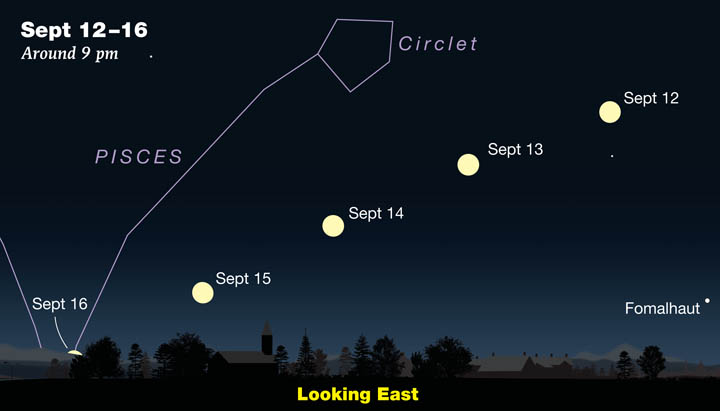September 2019: Triangle Time – SkyandTelescope.com
Download September’s Sky Tour astronomy podcast for tips on observing Jupiter, Saturn, and the easy-to-spot Summer Triangle.
LISTEN HERE:
Podcast: |
Subscribe: | | | | | | |
This month’s Sky Tour let’s you celebrate the equinox; get the backstory on this month’s Harvest Moon; check in with Venus, Jupiter, and Saturn; and explore the Summer Triangle.
On this month’s equinox (September 23rd at 3:50 a.m. Eastern Daylight Time), the Sun shines directly down on Earth’s equator as it heads south in declination. Equinox comes from the Latin word aequinoctium, meaning “equal nights” — days and nights everywhere are both 12 hours long.

This month’s full Moon is called the “Harvest Moon” because it appears low in the eastern sky at the same time on several consecutive evenings.
Sky & Telescope
Full Moon occurs just after midnight on the 14th for the East Coast but late on the 13th in time zones farther west. We call this the Harvest Moon because, at this time of year, the nearly full Moon rises only about a half hour later each succeeding evening. This geometry gives farmers a little extra late-evening light for harvesting their crops — hence the name.
Summer might be ending astronomically, but most of summer’s stars can still be seen. Topping the list is the trio of bright stars collectively called the Summer Triangle. Finding them is easy: Lift your gaze way up to find a bright star that’s almost directly overhead. That’s Vega. You should also be seeing the other two corners of the Summer Triangle. Altair is to the south of Vega, and to its east is Deneb.
This month’s podcast shows you how to identify not just these stars but also the constellations in which they reside. You’ll also learn why Vega is the anchor for modern astronomy”s magnitude system — and which star now visible after sunset is actually a bit brighter.
To find out where and when to spot all these sky sights and many more, play or download this month’s Sky Tour episode.




